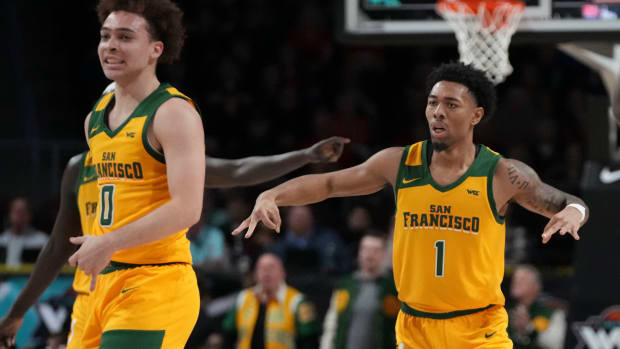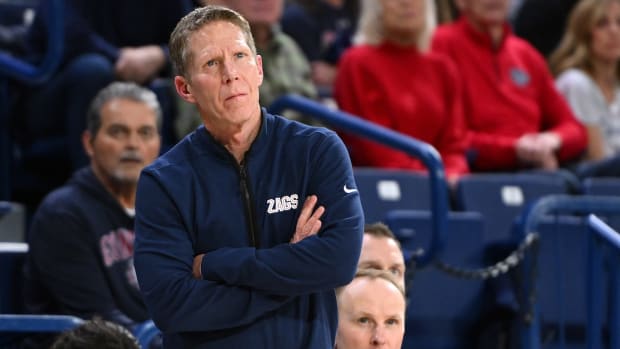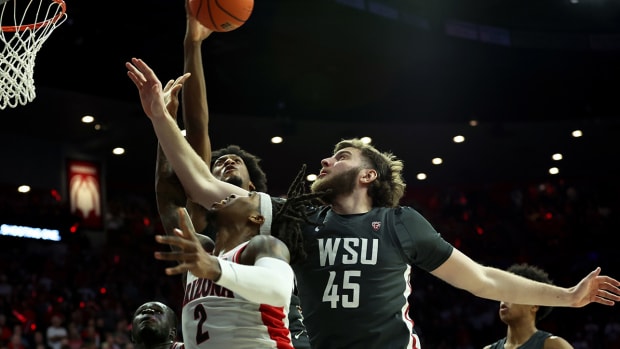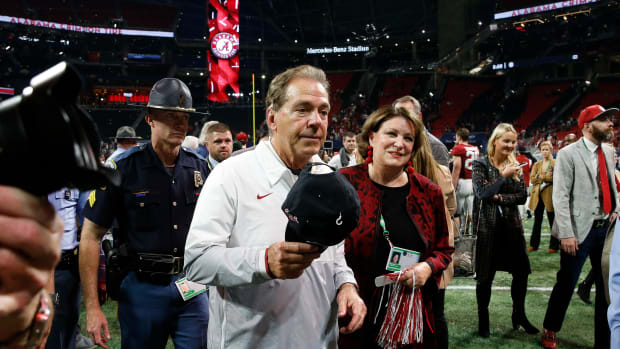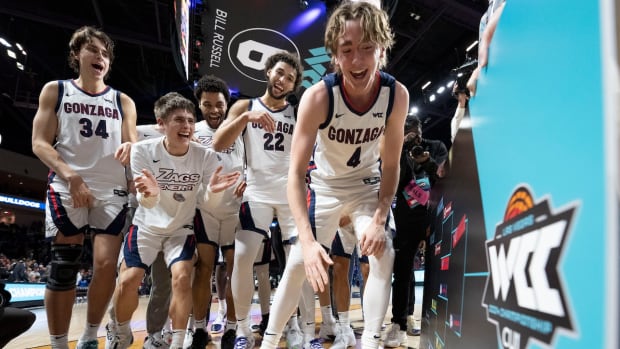The Read-Option: What's really the best approach to naming a starting quarterback?
Carl Pelini has publicly narrowed down FAU's starting quarterback -- to four options. (Kevin C. Cox/Getty Images)
"Coach, who's looking like the starter at quarterback right now?"
Variations of this question have been asked all across the country this preseason, and for some teams, coaches have fielded the inquiry since the end of the 2012 campaign. A new starter under center is often a program’s most anticipated offseason announcement, and plenty of debate exists as to how the situation should be handled. Does a coach owe the team and public information about his starting quarterback? Is it advantageous to keep the depth chart under wraps? Does it serve a team well to know who will be handling plays on offense early on?
Campus Union’s Zac Ellis and Martin Rickman discuss this issue in the debut edition of The Read-Option.
Zac Ellis: As kickoff approaches, we’ve seen plenty of head coaches waffle over naming a starting quarterback. There’s TCU’s Gary Patterson, who is being as tight-lipped as anyone about his starting signal-caller; he’s even gone so far as to defending his secrecy. There’s Penn State’s Bill O’Brien, who is deciding between juco transfer Tyler Ferguson and freshman Christian Hackenberg, and FAU’s Carl Pelini, who said the Owls could use as many as FOUR passers this season. Is the smoke-and-mirrors technique a good thing or a bad thing?
Martin Rickman: I love it. I don’t think coaches should ever name starters, if they can avoid it. Nick Saban said he wouldn’t release a depth chart if he didn’t have to, and Michigan State’s Mark Dantonio threw a bunch of “OR”s into his quarterback competition. Heck, ULM is outright playing two quarterbacks with no pretenses. This way is more fun, more mysterious and more exciting. I don’t like the practice of maximum information all the time. Let’s leave a little something to the imagination, huh?
ZE: There’s something to be said for bringing a sense of stability to a roster, though. Certainly, keeping things hush-hush can be good from a strategic standpoint, but suppose a coach has a very young offense that lost a longtime starter under center… say, like EJ Manuel at Florida State. Sure, redshirt freshman Jameis Winston was the presumed successor (and has since been tabbed as the starter), but isn’t there more confidence around the roster once a guy has been designated as the No. 1? I know Saban doesn’t have to worry about this problem right now. He brings back two-time defending BCS champ AJ McCarron. But surely Saban would agree that part of any successful process is a sturdy foundation. That kind of thing doesn’t come together at the 11th hour.
MR: But why does the public need to know anything? Obviously, coaches know who their quarterback is going to be before the last day, right? And if not, maybe this 11th-hour alternative is inspiring. Perhaps a coach has two players ready to step up, the competition lights a fire under them and boom. Diamonds are formed under pressure.
ZE: But Rome wasn’t built in a day, either. (Clichés!) I tend to think an offense would become more comfortable with the knowledge that coaches have already put their faith behind a player. If I’m a veteran wideout about to enter a season with three or four passers vying for the starting spot, I don’t want to head into game week without a sense of trust between my coaches and my quarterback. That’s not to say coaches can’t trust a whole host of candidates. But throwing full support behind one guy offers the ultimate sign of respect from a staff before the team has even hit the field.
MR: If you have four guys, play one guy per quarter. Then rinse and repeat. Heck, put 11 quarterbacks out there and also teach them to block and run and catch. Then the defense will never know where the next play is coming from. It'll be so confused. Look, I get it. Having a rapport is important. And sometimes coaches don’t have a three- or four-year starter to go to, so they set it and forget it like a roast in the Ronco Showtime®. I'm just saying competition isn’t necessarily a bad thing. Too many times I’ve seen a guy be anointed the starter, and then — because perhaps coaches were slow to react — the guy is left in his position far too long while a perfectly good young quarterback wastes his eligibility under the guise of “learning.” Being uncomfortable is a good thing. Being uncomfortable encourages growth. A little bit of anxiety means someone isn’t getting complacent.
ZE: You almost convinced me with that 11-quarterback roster talk. I mean, there may be no better strategy than an 11-QB lineup. Does any defensive coordinator know how to game plan for that? Talk about a curveball. And I certainly agree that throwing a newcomer into the fire encourages growth, especially under center. That’s instant maturation. But I wonder more about the toll it takes on the rest of offense while a young quarterback grows, and often stumbles. There are 10 other players on the unit. A quarterback’s growing pains can spread throughout the rest of the offense.
MR: I guess each situation depends on the team. Who are its opponents for the first few weeks? How experienced is the rest of the offense? Is its offensive coordinator new or has he been with the program for a while? Coaches know their teams better than we ever seem to give them credit for. And remember, indecision isn’t necessarily bad. Sometimes getting frustrated rather than deciding for the sake of deciding can lead to revelations.
ZE: Agreed. You and I might cover college football, but we’re not roaming the sidelines with a headset any time soon. If a coach deems a quarterback worthy, well, sometimes it's best to take him at his word. After all, he might discover the next Johnny Manziel, just as Texas A&M did around time last year.
MR:
Anna Karenina


